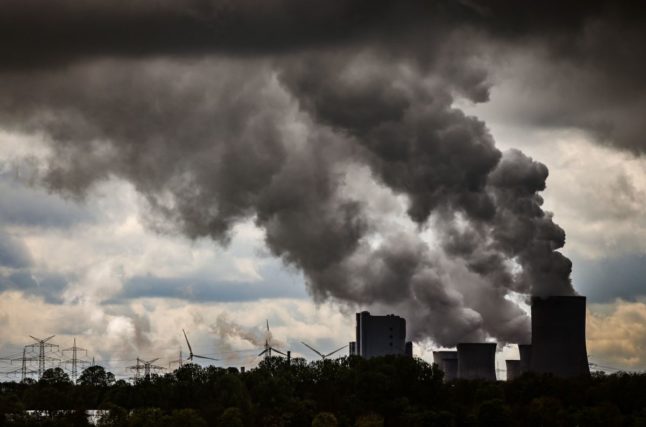After northern Germany was hit by rainstorms on Sunday, the thunderstorms and harsh rain show no sign of letting up, leading to fears of further floods and travel chaos across the country this week.
Writing on Twitter on Monday morning, the German Weather Service (DWD) warned the northern and northeastern regions of the country, as well as parts of southern Germany, would see “higher potential for storms due to strong, heavy rain” and “occasional thunder and lightning” in the evening.
Auch am heutigen Montag wirbelt Tief DIRK das Wetter in Deutschland durcheinander & sorgt für zahlreiche Schauer und Gewitter!
V.a. im Norden & Nordosten sowie Teilen des Südens erneut erhöhtes Unwetterpotential durch heftigen Starkregen. Sonst nur vereinzelt starke Gewitter. /V pic.twitter.com/KL0i1YP8ub— DWD (@DWD_presse) July 26, 2021
Brandenburg, Mecklenburg Western-Pomerania, Schleswig-Holstein and Hamburg are likely to be the worst affected states in the North, while parts of Bavaria and Baden-Württemburg could be badly hit in the South.
These regions could see up to 50 litres of rainfall per square metre on Monday, moving up to 60 litres in certain parts of northern Germany.
Other parts of the country could also be struck by thunderstorms and rainfall of up to 25 litres per square metre, though the flood-hit regions of Rhineland-Palatinate and North Rhine-Westphalia are likely to be spared the worst of the storms.
READ ALSO: Germany’s flood zones spared severe storms on Saturday
However, dramatic weather will continue over the course of the week, with local thunderstorms, heavy rain and hail forecast until Saturday. The storms will be accompanied by high temperatures – particularly in the eastern parts of Germany – with the mercury forecast to reach 30C on Thursday and hitting the high 20s on Friday.
The news of further extreme weather follows a chaotic night in Berlin on Sunday in which the emergency services were called out 250 times to deal with flooded basements and streets.
In the eastern district of Buch, people posted images of water flowing through the doors of the S-Bahn station and out into the carpark.
Gerade eben S Bhf Berlin Buch. pic.twitter.com/V1jrdZUxgO
— Zweistein, Berliner, lack of style and pedigree.. (@ManfredKaufman3) July 25, 2021
At the Berlin-Brandenburg Airport, passengers faced severe delays as planes were unable to take off in the storm.
The bad weather also affected Saxony, Brandenburg, Schleswig-Holstein and Upper Bavaria, killing at least two people.
READ ALSO: ANALYSIS: Why Germany faces tough questions over its disaster response
According to police, one man was attempting to pump the water out of his cellar in Saxony on Sunday evening and suffered an electric shock.
In Eglfing, Upper Bavaria, a man out hunting was found dead in a forest following the storm. The 57-year-old was sitting on a lookout point on Sunday afternoon when it was knocked down by a gust of wind.




 Please whitelist us to continue reading.
Please whitelist us to continue reading.
Member comments